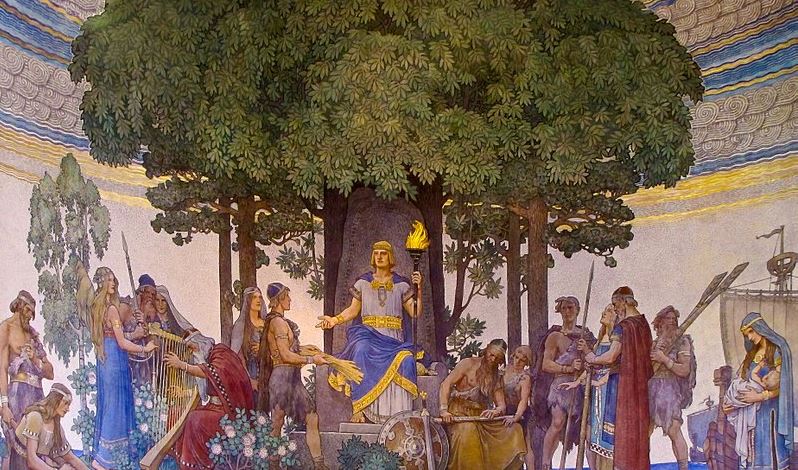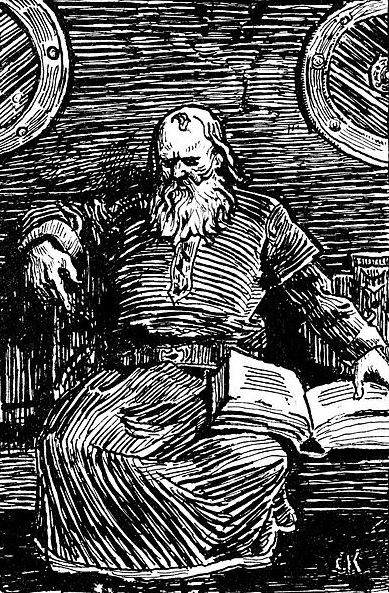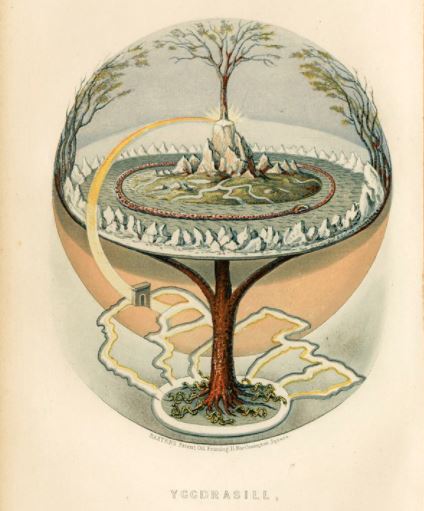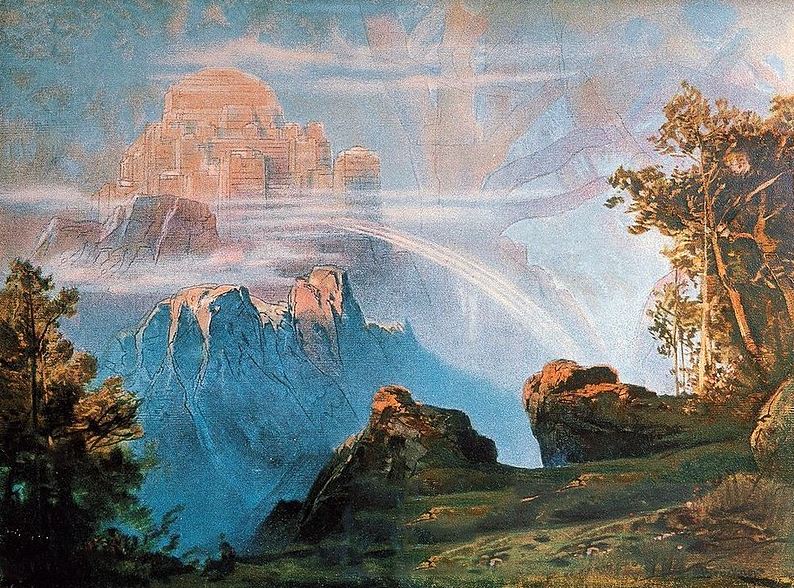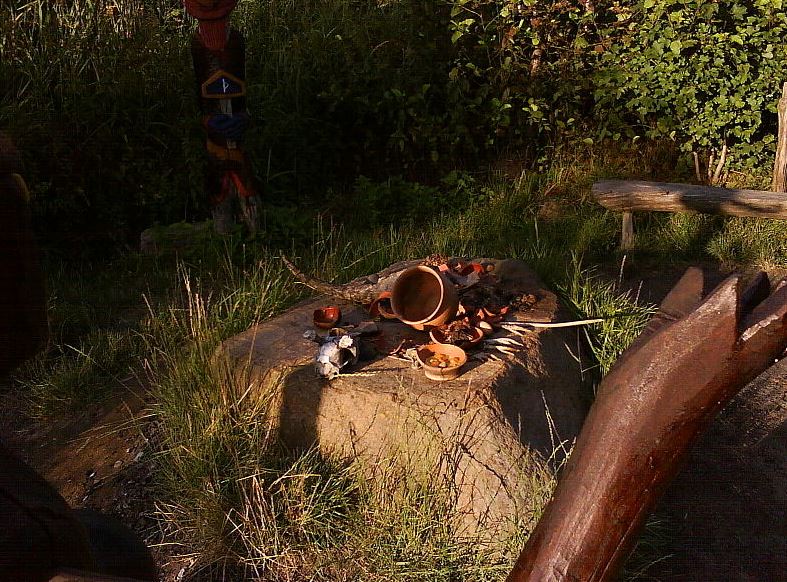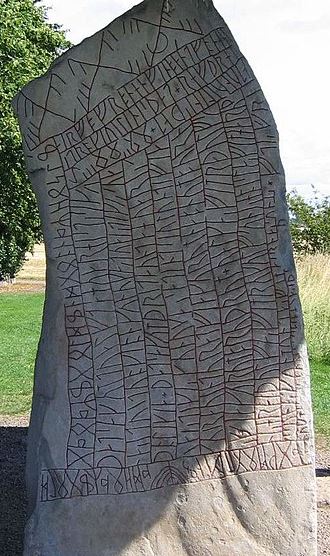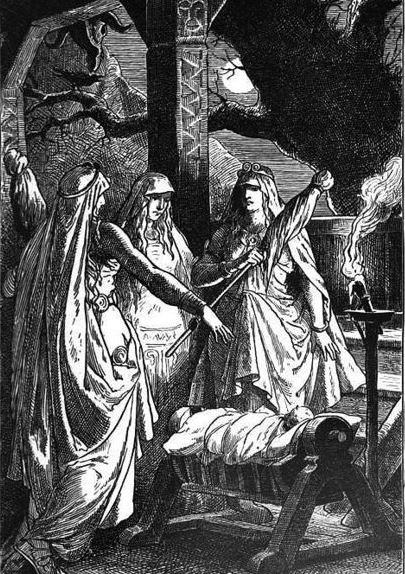All You Need To Know About The Old Norse Gods and Goddesses
The connection with the Old Norse gods and goddesses and their worship was quite peculiar indeed.
Norse mythology is one of the most interesting due to the personality of their Norse gods and goddesses and the high number of stories and myths around the creation of the world and its destruction.
All the Old Norse gods and goddesses
Unfortunately, the vast majority of the stories were told but written, so humanity has lost many of the myths and information about the Norse gods and goddesses.
However, one of the main sources of knowledge comes from the Prose Edda, which was a manuscript full of poems about their mythology. It was written by Snorri Sturluson, and in many of the articles you will see here, we will mention part of his poems about the Norse gods and goddesses.
Snorri Sturluson the writter of the Prose Edda, a manuscript about the Old Norse Gods and Goddeses
This is not the only manuscript found about the gods of Norse mythology. The sagas are another of these sources in which we can find thousands of tales about their history and their mythology.
In any case, to help you understand much better how the Norse mythology gods and goddesses interacted, how were the cosmos structures, and the context of their religion, we are going to be deepening more about the most important aspects.
Explaining the cosmology in the Norse Mythology
In the Norse cosmology, all the beings are inhabitants of the Nine Worlds that surround the World’s sacred tree Yggdrasil.
The humans live in the realm of Midgard, which is a region in the center of the cosmos, while the gods and the giants, sometimes called “jottuns” live in the realm of Asgard. In the rest of the Nine Worlds live creatures called elves and dwarfs.
The afterlife is not as simple as in other religions. While in other cultures, death is considered to be something negative, for the Norse culture was something to be celebrated.
The humans who died from disease or old age would go to the Helheim, which is depicted as the Underworld ruled by her goddess queen Hel.
The souls of the warriors who died in battle would by carried the Valkyries to the Valhalla, which was the main hall of the Norse god Odin, the All-Father. Once they were in Valhalla they would celebrate fight and die every day, for the next day to be reborn again in Valhalla to continue fighting and celebrating.
The warriors would wait for the Ragnarok, a great battle that would decide the fate of the world in which these warriors will fight alongside the gods.
Valhalla where the Norse god Odin live
The souls could also be chosen by the Norse goddess Freya, the Queen of the Gods and the wife of Odin, to enter in her hall called Fólkvangr.
Even when it is unclear, in some of the manuscripts there are references to reincarnation. For example, one of the myths of the Norse god Balder is present on this topic.
In the text, it also mentions the Ragnarok, which was a series of events that would lead to the death of a great number of the Old Norse gods and goddesses after an enormous battle that included natural disasters and the submersion of the world in water.
The Battle of Ragnarok
After that event, the world will be born anew, fertile and habitable and it will be repopulated by two humans, Lif and Lifthrasir, the survivers of the Ragnarok.
The leader of the new tribe of Norse gods and goddesses will be the Norse god Vidar, which will replace Odin after his death in Ragnarok.
The tribes of the gods of Norse mythology
Asgard was divided into two groups of deities called the Vanir and the Aesir who were at war for a long time but eventually made peace after the exchange of hostages.
Some of the deities that were part of the Aesir tribe were Thor, the strongest Norse god, Odin the All-father, and Tyr, the god of justice
Unfortunately, in the manuscripts very few Vanir are mentioned: we can find between them the Norse god Freyr and the Queen of the Gods, Freya.
The Norse gods and giants or “jottuns” have a very conflictive relationship as is mentioned in the manuscripts.
The giants are described as enemies of the old Norse gods and goddesses, as well as their ancestors. The reason is the male Norse gods married the giantesses but the giants were repulsed by the Norse goddesses.
That is the reason why we will be finding many Norse gods whose parents are giantesses but not the other way around.
How did they worship the Norse gods and goddesses?
The main religious ritual the Norse performed was the sacrifice of animals that were slaughtered. Their blood was sprinkled on the altars inside and outside the temple walls while the people drink and eat as a gesture of celebration.
Reconstruction of food offering
There was a particular ritual that was performed every nine years at the temple at Uppsala in which nine males of every kind of animal (and also humans) were sacrificed and the bodies hung in the temple grove.
Mysticism and magic
In their mythology, the old Norse gods and goddesses were associated with two different forms of magic.
Odin, the All-Father god is associated with the rune magic, and this was typically referred to as the treatment of diseases in both humans and animals.
A runestone, a symbol for magic
The second form of magic was the Seirdr, typically associated with Freya, the Queen of the Gods. This magic was referred to as divination and foretelling and it was practice by women who were called volvas.
The Fate and the free will in Norse mythology
The Norse people believed that they were entirely bound to fate and it was a force that they could not overcome by any means.
This fact is depicted in many of the myths, especially in the myth of the death of Balder or in Ragnarok.
Even when the Norse gods and goddesses were able to see the future thanks to the magic of the volvas, they could not change it, no matter what happened. This lead to the conclusion that fate was a force that humans could not overcome.
Norse gods and creatures: the Norns
The Norns are female beings that had the task to determine the fate of the individuals. They were located in the roots of the world’s tree Yggdrasil and it was said that three primary Norms were the ones who took care of Yggdrasill.
A list of Norse gods and goddesses
Here you can find a detailed list of the old Norse god and goddesses in mythology.
| Name | God/Goddess Of | Power | Appearance | Role |
| Odin | Wisdom | Ability to Transform, Magic Runes | Beared Old Aged Man | The All-Father |
| Freya | Love and War | Influence the Lives of Gods and People | Woman with her Brisingamen | Volva |
| Loki | Chaos, Lies and Mischief | Change his Appearance | Man who changes his form | God of Chaos |
| Thor | Thunder, Lightning and Hammers | Unmatched Strenght, Control Thunder | Man in Armor with His Hammer | Protector of Mankind |
| Bragi | Poetry, Knowledge and Music | Vast Knowledge | Man with a Beardr | Patron of Skalds |
| Idun | Rejuvenation and Spring | Grant Inmortality with her Apples | Young, Beautiful Woman | Keeper of the Golden Apples |
| Tyr | War and Justice | Strenght and Resistent to Harm | Man with One Aarm | Warrior of Justice, Responsible of War Treaties |
| Vidar | Vengeance | Astonishing Strenght | Strong, Silent Man | Avenger of Odin, Ruler after Ragnarok |
| Balder | Love, Purity and Joy | Indestructible, Able to predict the Future | Handsome Man | Son of Odin and Frigg |
| Frigg | Fertility, Love, Marriage and Wisdom | Foresee the Future | Queen | Mother and Powerful Volva |
| Freyr | Peace, Rain, Sunshine | Prosperity and Well-Being | Man with a Golden Boar | Keeper of Peace |
| Heimdall | Bifrost | Supernaturally good eyesight and earing | Man with a Horn and a Sword | Guardian of Asgard |
| Hel | Underworld and Death | Resurrection of Souls | Woman Half White and Half Black | Queen of Helheim |
| Njord | Sea | None | Beared Man | Patriarch of the Vanir Tribe |

